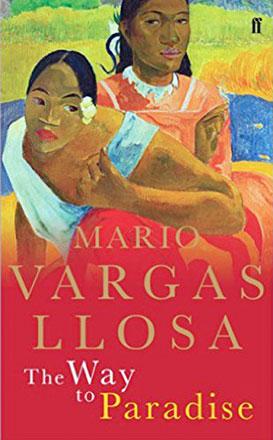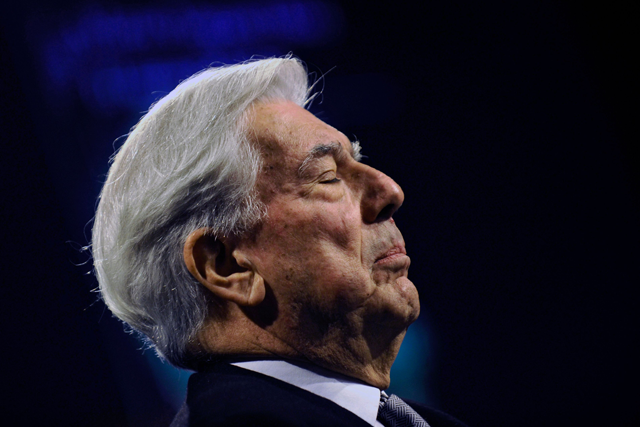You are here
In search of heaven on Earth
By Sally Bland - Dec 20,2015 - Last updated at Dec 20,2015

The Way to Paradise
Mario Vargas Llosa
Translated by Natasha Wimmer
London: Faber and Faber, 2003
Pp. 424
In this riveting historical novel, Peruvian writer Maria Vargas Llosa, winner of the 2010 Nobel Prize in Literature, reimagines the physical and ideological journeys of Paul Gauguin and his grandmother, Flora Tristan. Separated by half a century and a fragmented family history, the two never met, but they shared a common dream of creating heaven on Earth.
Neither succeeded in founding their utopia, but the daring and energy with which they pursued their respective quests made Gauguin a ground-breaking artist, while Tristan gained recognition for her radical feminist writings and exposure of the horrendous conditions of Europe’s working class. Judging from the book title, Llosa finds the magic in the quest, not the destination.
Both Gauguin and Tristan revolted against the bourgeois society into which they were born, but for different reasons. Gauguin declared war on (Western) civilisation, convinced that it precluded the development of art. As he told the young artists who gathered around him in Brittany where he first sought an unspoiled society, “To truly paint we must shake off our civilised selves and call forth the savage inside.” (p. 23)
Brittany was not far enough away from Paris, and soon he began to plan his journey to Tahiti in the South Pacific.
For her part, Tristan began by rebelling against women’s oppression and broadened her scope to fight against the exploitation of the entire working class. Her travels were for the purpose of founding a Workers Union that would spread from France across Europe and then the world, to spark a peaceful revolution that would end in a harmonious, just society where all workers were guaranteed good housing, healthcare and education.
Both were plagued by lack of funds, as well as health problems — his caused by “the unspeakable illness”, presumably syphilis, caused, some would say, by his own indiscretions. Flora’s bad health, on the other hand, stemmed from injuries inflicted by her husband from whom she was unable to get divorced under the prevailing, male-biased, legal system. This abusive marriage was the original cause of her radicalisation.
Both Paul and Flora were essentially loners, following their inner voice and logic, unafraid to be different, and sometimes hounded by the police — she as a subversive and he for his often scandalous behaviour. Both met many obstacles and disappointments. Gauguin found that the Maori of Tahiti had already forsaken many of their traditional customs under the pressure of missionaries and colonialism, while Flora saw that many workers had been cowed by their exploiters and the church into accepting their miserable lives. Finally, both, like the author, were true cosmopolitans, capable of playing many roles and moving between different social circles and countries.
In telling the parallel tales of Gauguin and Tristan, Llosa ushers the reader into a variety of fascinating milieu from Tahiti’s lush tropical forests and Peru’s oligarchy, to the slums of London, Paris and a string of French cities at the height of the Industrial Revolution. Much of the book’s charm lies in the singular personalities of Gauguin and his grandmother, but the reader meets many other real and imagined figures, from the European socialists who facilitate Tristan’s campaigning to Gauguin’s troubled relationship with “the mad Dutchman” (an obvious reference to Vincent Van Gogh). Most fascinating is how the author traces the personal development of the two — how Gauguin became an artist in the first place, what inspired his greatest masterpieces, and how Tristan’s radical thinking evolved. Their respective trajectories pose many questions: What is art? What is revolution? Are they possible? How are they made?
Besides rich descriptions of land- and cityscapes, and the often idiosyncratic people who inhabit them, Llosa employs several literary devices to entangle the reader in his tale. Much of the novel unfolds as flashbacks. Llosa thrusts us into a scene, dropping references which are only half understood and then returns to the past to explain how Paul and Flora got where they are. To explore their inner lives, he pops up from time to time to question them directly about their fears and shortcomings. Or is it their own inner voices expressing self-doubt? One is not really sure. Much is deliberately left ambiguous.
With a keen eye for the paradoxes of life and tongue-in-cheek humour, Llosa exposes human frailty and the difficulties of making change for the better. He has an uncanny ability to mock his characters and elicit sympathy for them at the same time. Most of all, he tells an incredibly good story, much of which is true, at least in essence.
Related Articles
LIMA — Peruvian writer and Nobel literature laureate Mario Vargas Llosa died on Sunday at the age of 89, his family announced
LIMA — Peruvian writer and Nobel literature laureate Mario Vargas Llosa died on Sunday at the age of 89, his family announced, ending the er
This book, like the “two novels, six short story collections and a book about her friendship with the artist Princess Fahrelnissa, her mentor” by the same writer, is sure to help her reach immortality, in the process making the reader privy to a rich life and sharp, inquisitive mind that could be the envy of many, tens of years younger than her.














